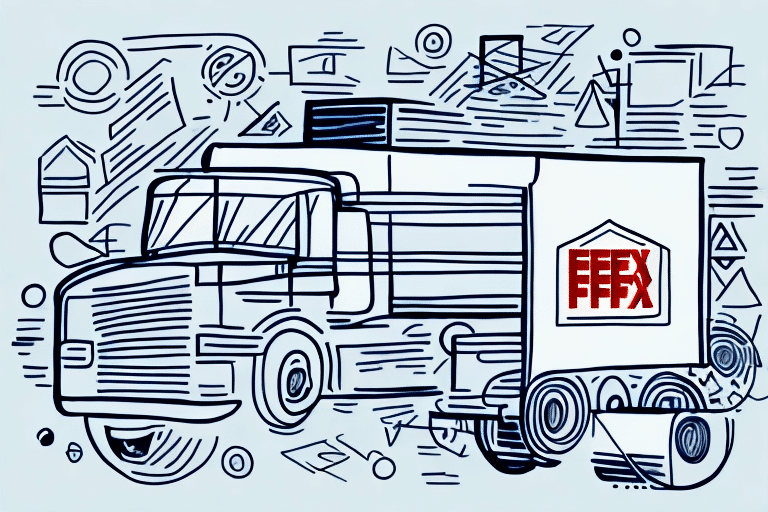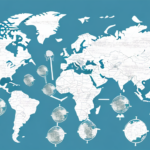How to Ship a Large Package with FedEx: Packages Over 130 Inches
If you need to ship a large package that measures over 130 inches, FedEx is one of the best carriers to use. However, shipping such a package requires extra attention and consideration. In this article, we'll cover everything you need to know to successfully ship large packages with FedEx.
Understanding FedEx's Size and Weight Restrictions
FedEx has specific size and weight restrictions for packages, and these restrictions can vary by service type. In general, FedEx defines a large package as any shipment that exceeds 96 inches in length or 130 inches in length and girth combined. The maximum weight for packages also varies by service type, ranging from 150 pounds to 2,200 pounds.
It's important to note that FedEx also has additional restrictions for certain types of items, such as hazardous materials and perishable goods. Hazardous materials, such as chemicals and batteries, require special handling and documentation and may not be eligible for all FedEx services. Perishable goods, like food and flowers, have specific packaging and shipping requirements to ensure they arrive in good condition. Always check with FedEx or consult their online resources to ensure your package meets all necessary restrictions and requirements.
Benefits of Using FedEx for Shipping Large Packages
There are several benefits to using FedEx for shipping large packages:
- Extensive Size and Weight Limits: FedEx accommodates some of the highest size and weight limits in the industry.
- Variety of Services: From ground shipping to overnight delivery, FedEx offers a range of services to meet your needs.
- Reliability and Customer Service: FedEx has a strong reputation for dependable delivery and excellent customer support.
- Real-Time Tracking: Monitor your package's progress with FedEx's comprehensive tracking system.
- Custom Packaging Options: FedEx provides various packaging solutions to ensure your package is protected during transit.
These features can save you time and money while providing peace of mind knowing that your package is in good hands.
Preparing Your Package for Shipment
Selecting the Right Packaging Materials
Choose high-quality, durable materials to protect your shipment:
- Boxes: Use sturdy cardboard boxes that can support the weight of your items.
- Protective Materials: Utilize bubble wrap, packing peanuts, or foam to cushion your items and prevent movement.
- Sealing: Securely seal your box with strong packing tape to keep everything in place.
Proper Labeling
Clearly label your package with both the recipient's and your return addresses. Ensure that the addresses are correct and legible to avoid delivery delays or lost packages. If shipping internationally, include all necessary customs forms and information.
Compliance with Regulations
If your package contains hazardous materials or perishable goods, ensure you comply with FedEx’s specific regulations. This may involve additional documentation and packaging requirements.
Measuring Your Package Correctly
Accurate measurements are crucial to ensure your package is classified correctly:
- Dimensions: Measure the longest side, length, and height. Round up to the nearest inch.
- Girth: Calculate the girth by measuring the distance around the package.
- Total Size: Add the length and girth together. If the total exceeds 130 inches, your package is considered oversized.
Oversized packages may incur additional fees. To minimize costs, consider splitting your shipment into smaller packages or exploring alternative shipping methods. Always account for extra padding or packaging materials to avoid underestimating the package size.
Securing Your Package to Prevent Damage During Transit
Properly securing your package is essential to prevent damage during transit:
- Fill Empty Spaces: Use ample packing materials to eliminate any empty space within the box.
- Strapping or Banding: Consider using strapping to further secure the package, especially for heavy items.
- Fragile Labels: Mark your package with "Fragile" or "This Side Up" to ensure careful handling.
- Box Size: Choose a box that is appropriately sized—not too large or too small—to minimize movement and provide adequate protection.
Using high-quality packing materials like bubble wrap or foam inserts can significantly reduce the risk of damage from bumps or jostles during shipping.
Labeling Your Package Correctly for FedEx Shipping
Proper labeling ensures your package reaches its intended destination without delays:
- Recipient Information: Clearly write the recipient's name, address, and phone number on the label.
- Return Address: Include your return address to facilitate returns or undeliverable packages.
- Tracking Information: Use the provided FedEx label or create your own, ensuring it includes all necessary tracking details.
- Customs Information: For international shipments, provide complete customs information to avoid clearance issues.
Secure the label using a label holder or clear tape to protect it from damage during transit. This helps prevent the label from peeling off or becoming unreadable.
Comparing Shipping Rates: Ground vs. Express Shipping for Large Packages
When shipping a large package with FedEx, deciding between ground and express shipping is crucial:
- Ground Shipping: Generally slower but more cost-effective, making it ideal for non-urgent shipments or shorter distances.
- Express Shipping: Faster delivery times, suitable for urgent shipments or longer distances, though typically more expensive.
Additionally, consider the size and weight of your package. Ground shipping is usually less expensive for larger and heavier packages, while express shipping costs can escalate with size and weight. For smaller, lightweight packages, express shipping might be a more affordable option.
Understanding Insurance and Liability Coverage Options with FedEx
Protecting your shipment is essential, especially for high-value items:
- Standard Coverage: FedEx includes limited liability coverage by default, which may not cover the full value of your shipment.
- Additional Insurance: Consider purchasing extra insurance to fully cover the value of your items in case of damage or loss.
- Specialized Insurance: FedEx offers specialized insurance options for items like fine art, jewelry, and electronics, providing enhanced protection and security measures.
For more information on FedEx’s insurance options, visit their Value-Builders page.
By following these tips and guidelines, you can successfully ship large packages with FedEx, ensuring they are delivered safely and on time.
Additional Tips for Successful Large Package Shipping
Tracking Your Shipment
Utilize FedEx's real-time tracking feature to monitor your package's progress. This allows you to stay informed about its location and estimated delivery time, which is especially useful for managing multiple shipments.
Packaging Sustainability
Consider the environmental impact of your packaging choices. Opt for recyclable or biodegradable materials, and explore reusable packaging options like plastic containers or crates to minimize waste.
Customer Service and Support
If you encounter any issues or have questions about shipping large packages, reach out to FedEx's customer service for assistance. Their support team can provide guidance and help resolve any problems that may arise.
Conclusion
Shipping large packages with FedEx can be a streamlined and efficient process when you follow the right steps. Understanding FedEx's size and weight restrictions, selecting appropriate packaging materials, accurately measuring and labeling your package, and choosing the right shipping option are all critical components for a successful shipment. Additionally, securing adequate insurance coverage provides extra protection and peace of mind. By adhering to these guidelines, you can ensure that your large packages are delivered safely, on time, and without unnecessary complications.






















